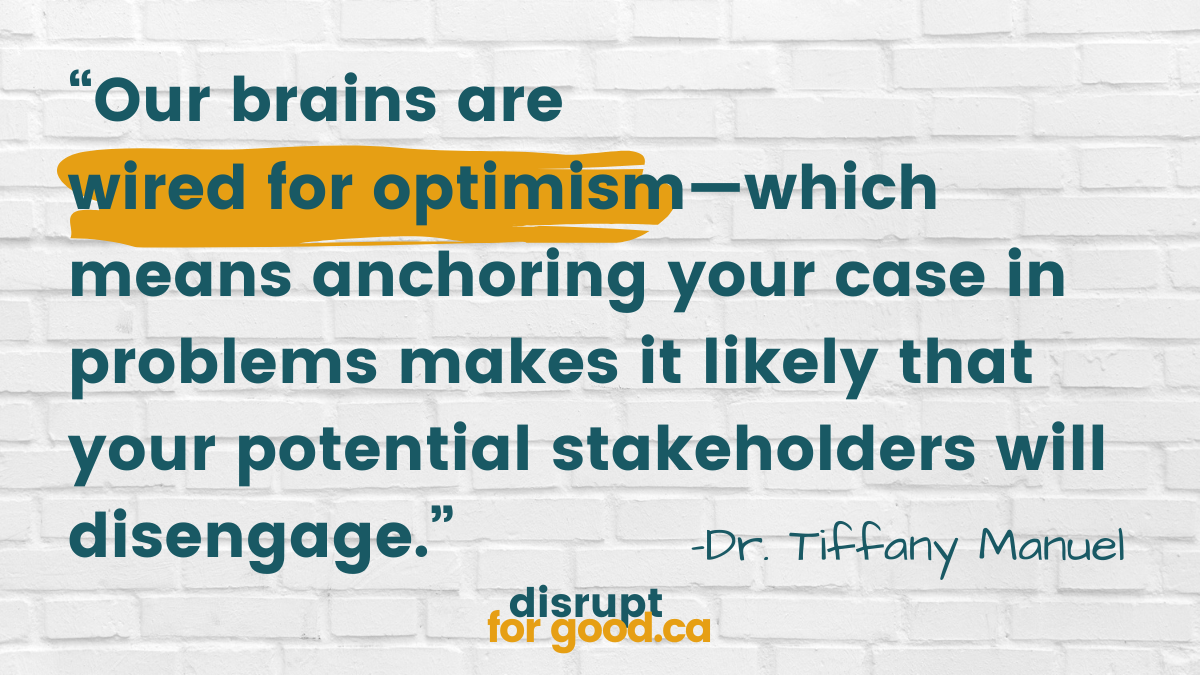|
We survived January! It’s always a long month for me and this one was no exception. And though the days were gray and the nights were long, I love having things to look forward to and some lovely invitations from others and plan-hatching of my own are getting me through. That, and giving in to the season and curling up with good books in my PJs shortly after dinner. One of the books I’ve finally been tackling is Case Made! By Dr. Tiffany Manuel. Tiffany lays out ten principles for making a strong case for the changes we want to make. One of them was new to me, based on a technique called anchoring, so I wanted to share that with you today. The Persuasive Technique of Anchoring
In her book, Dr. Manuel writes about a technique called anchoring. That was a new term for me but it is a pretty straightforward and logical technique to understand and implement in our communications: “Anchoring responds to the human tendency to give the most weight to the first piece of information or idea provided to us when making decisions. Given this cognitive bias, it is essential that, when making a case for change, we choose the first piece of information or data—our anchor—strategically. The data you use literally ’anchors’ people’s thinking, so our task is to use the data that invites and encourages a positive response to our call to action. ” (Additional explanation of the anchoring effect in this Wikipedia article.) That’s it. Sounds obvious, right? But we actually screw this up all the time. Dr. Manuel continues by explaining that although there is a ton of data out there, we tend to use it in ways that do not help our case making. For example, we often start with negatively framed data, anchoring the problem, which backfires when it is time to get our audience to act. “Our brains are wired for optimism—which means anchoring your case in problems makes it likely that your potential stakeholders will disengage.” When we come in hot with negatively-framed data about the problem rather than the solution we are championing, Dr. Manuel says our stakeholders often default back to their dominant narratives that feel like common sense to them. (Spoiler, it’s probably about personal responsibility, pushing the problem right back on the people bearing the brunt of inequitable systems, policies, and beliefs.) “Starting with problem-centric data starts this cascade of negativity that dead ends with the blame game rather than the outcomes we need.” So, a few tips! 1. Use your data to anchor solutions, not problems. Rather than start with a set of data describing the problem, start with data that helps people focus on the solution you are proposing. How many people can the solution help? How will it offset other costs? How long will the solution last? 2. Use your data to anchor people in systems-level solutions. If the goal is to change systems, anchor people in systems-level thinking. The more firmly we can do this, the more likely we are to have a systems-level conversation. (For an example, before I knew the term anchoring, I wrote about how our homeless enumeration anchors homelessness as an individual failing and undercuts our messaging about systems-based solutions.) 3. Use your data to anchor and inspire the possibility of change and the future we can build together. We can use our data to “broaden the public imagination” by showing how we have solved similar issues in the past or how other industries, countries, or organizations have overcome similar challenges. Likewise, inviting stakeholders to imagine the future they can help create up front helps inspire them to action. There are loads more ways to use anchoring for good, including additional suggestions in Dr. Manuel’s book, but these were my curated favourites and they are the ones I’m going to use to get started in intentional anchoring. If you try any of these tips out in your own change work, let me know how it goes! I’d love to hear about it.
0 Comments
Leave a Reply. |
AuthorI'm Jennifer. I am an advocacy and communications strategist working with multiple charities and nonprofits. And I want to disrupt our sector for good. Archives
April 2024
Categories |


 RSS Feed
RSS Feed
